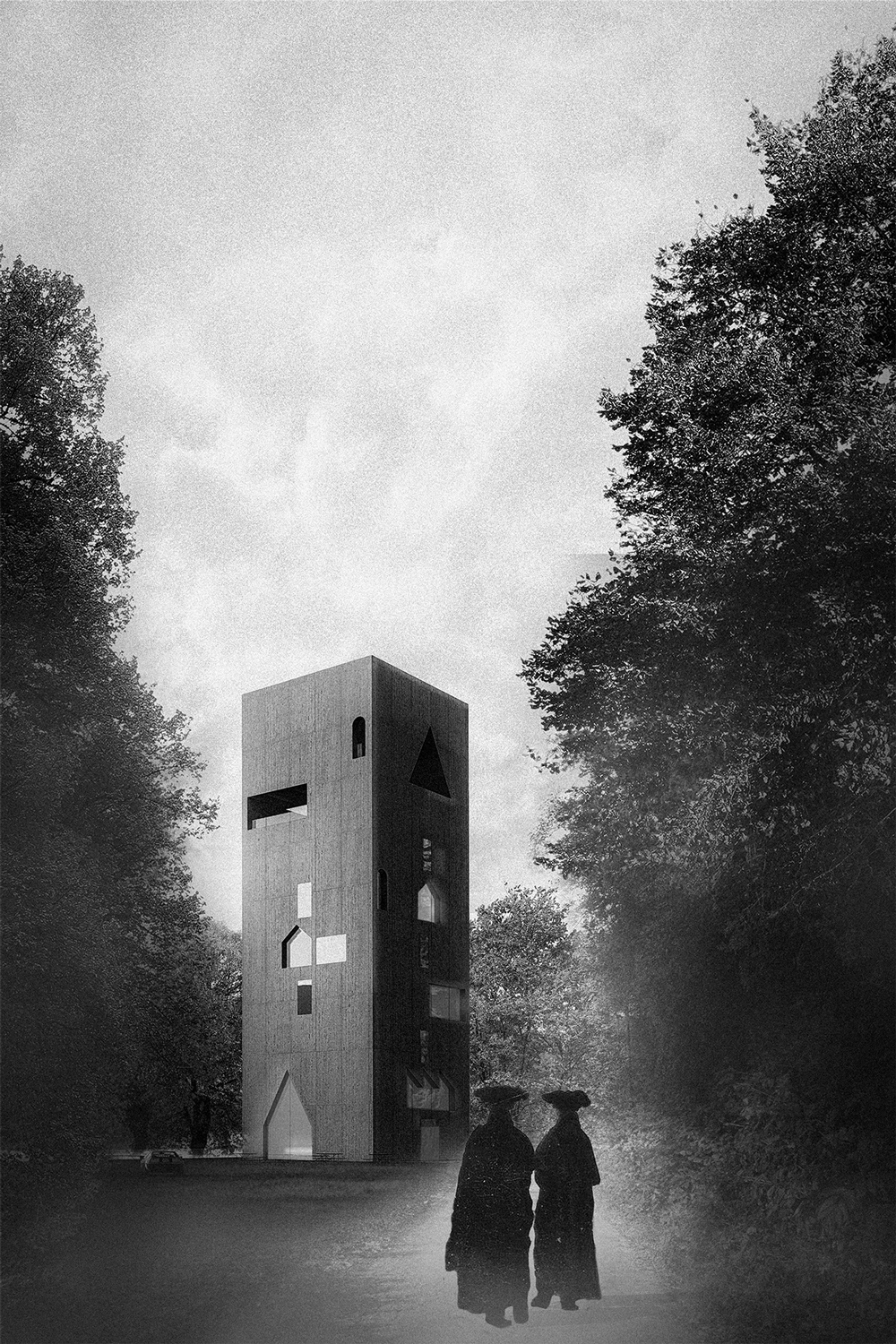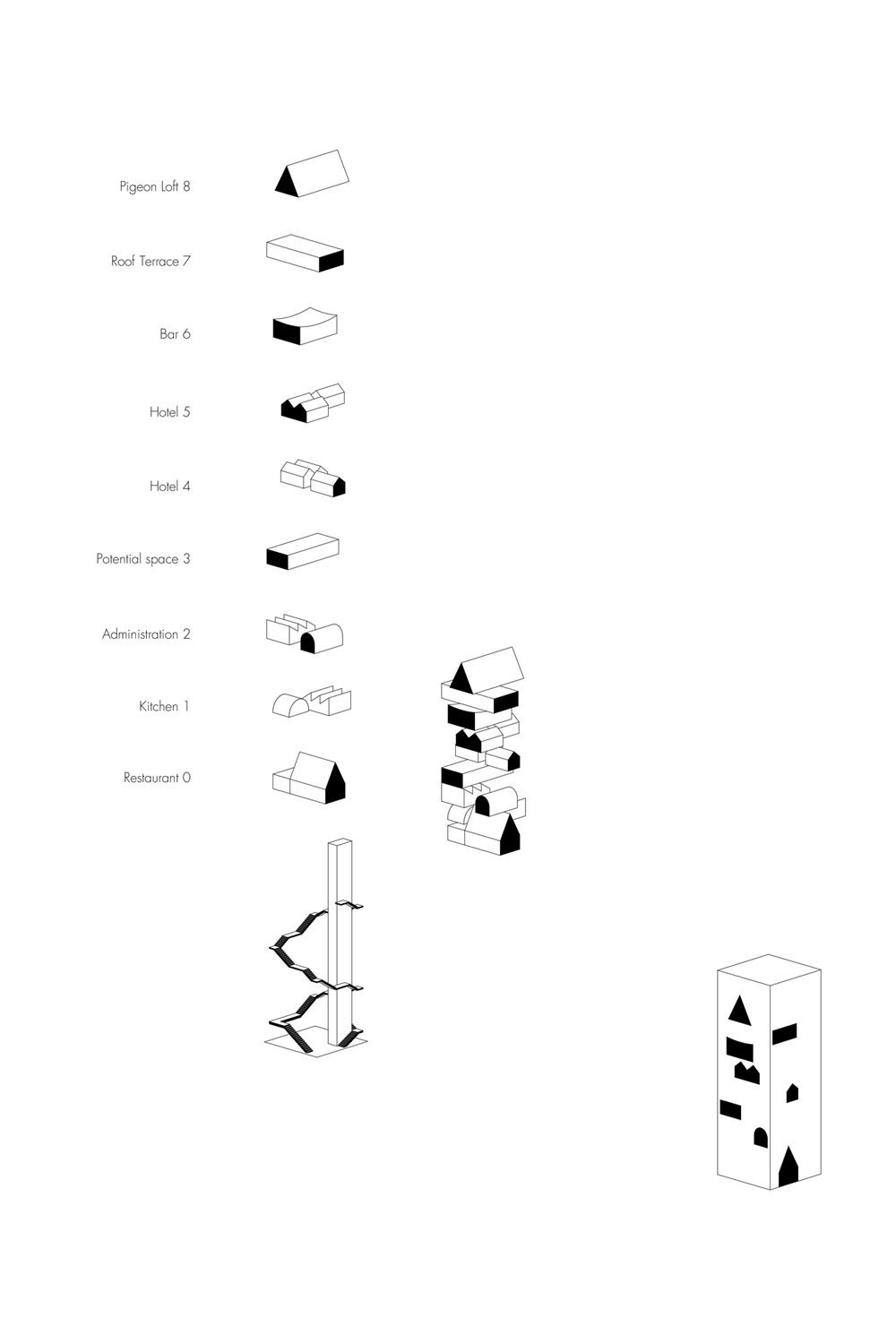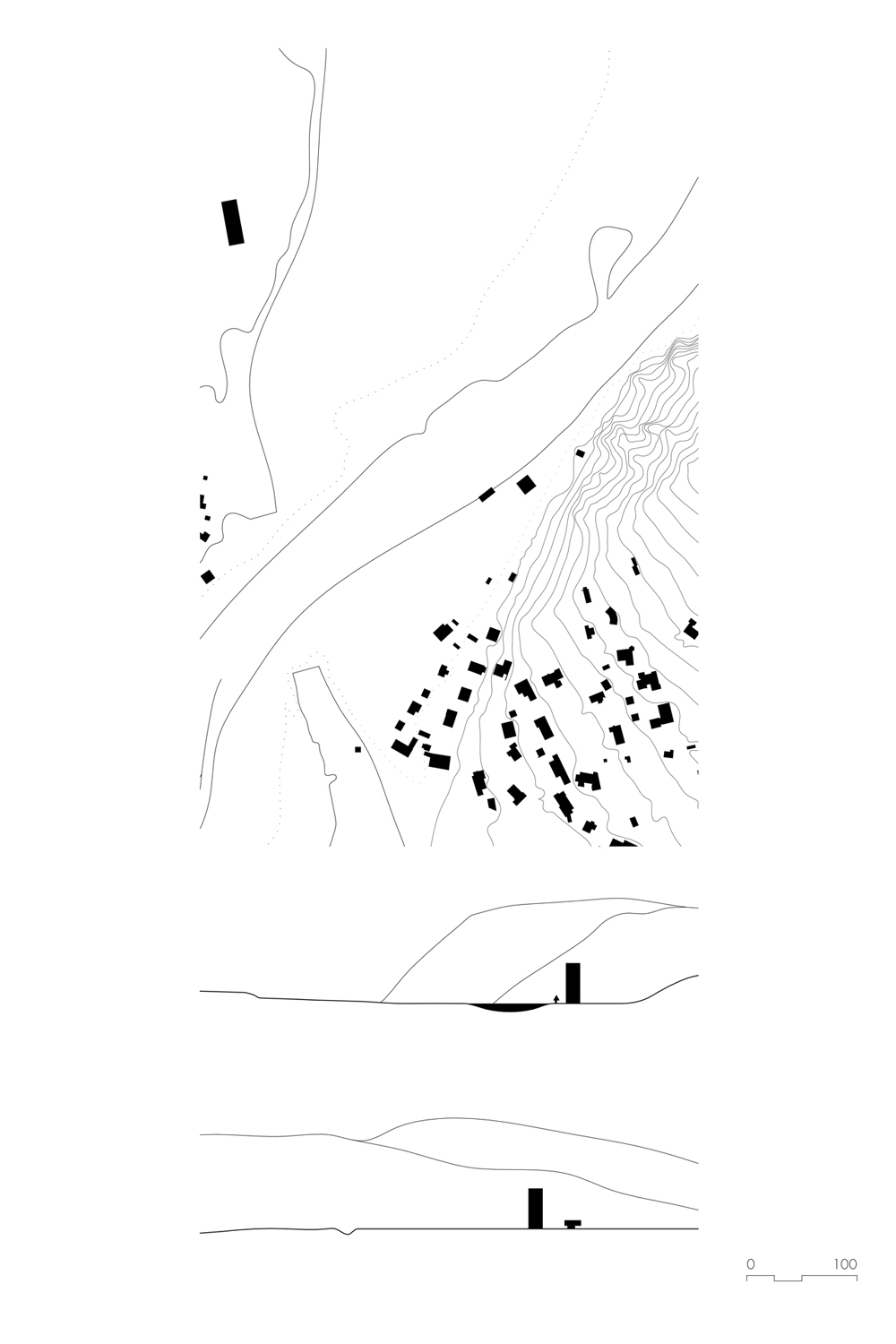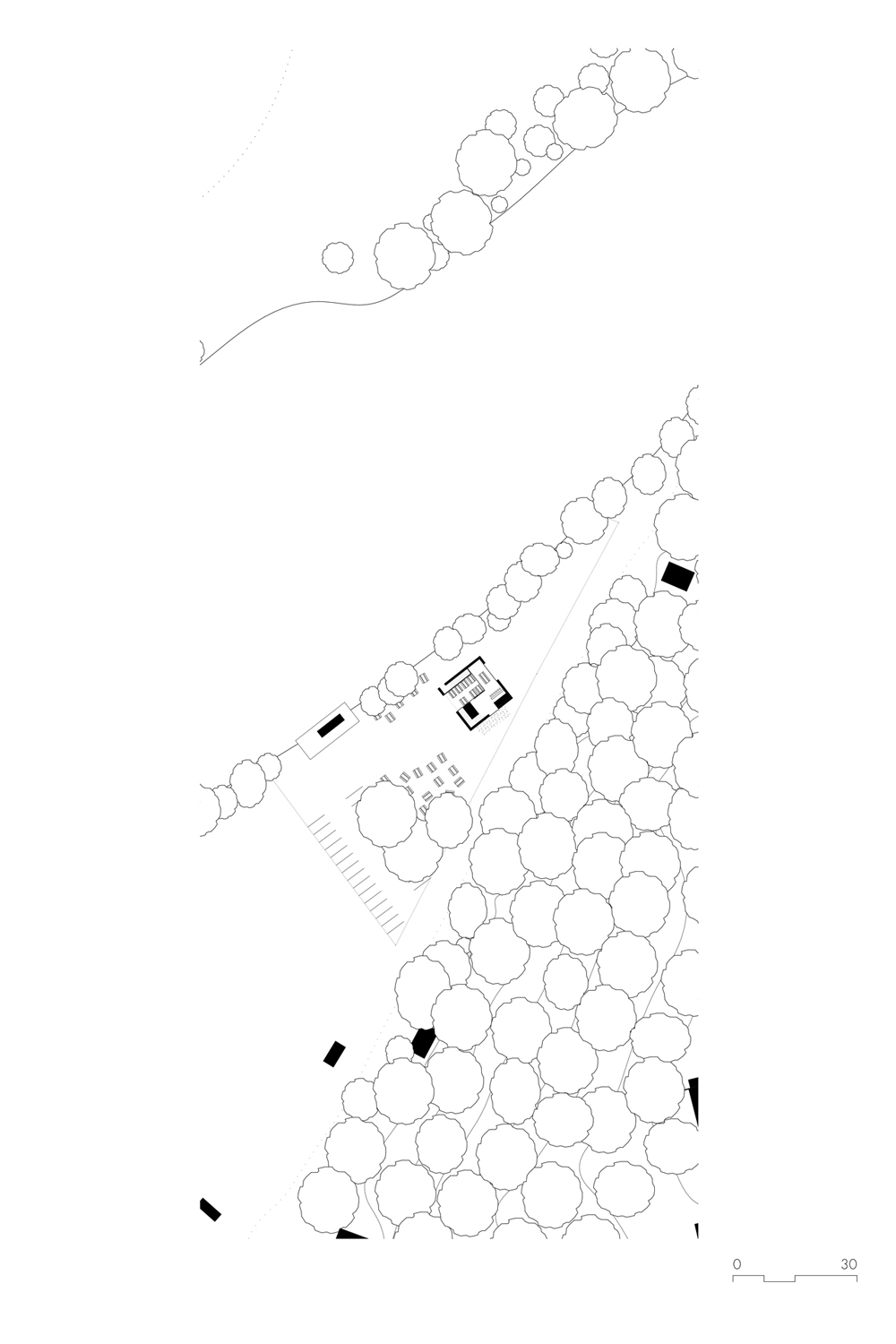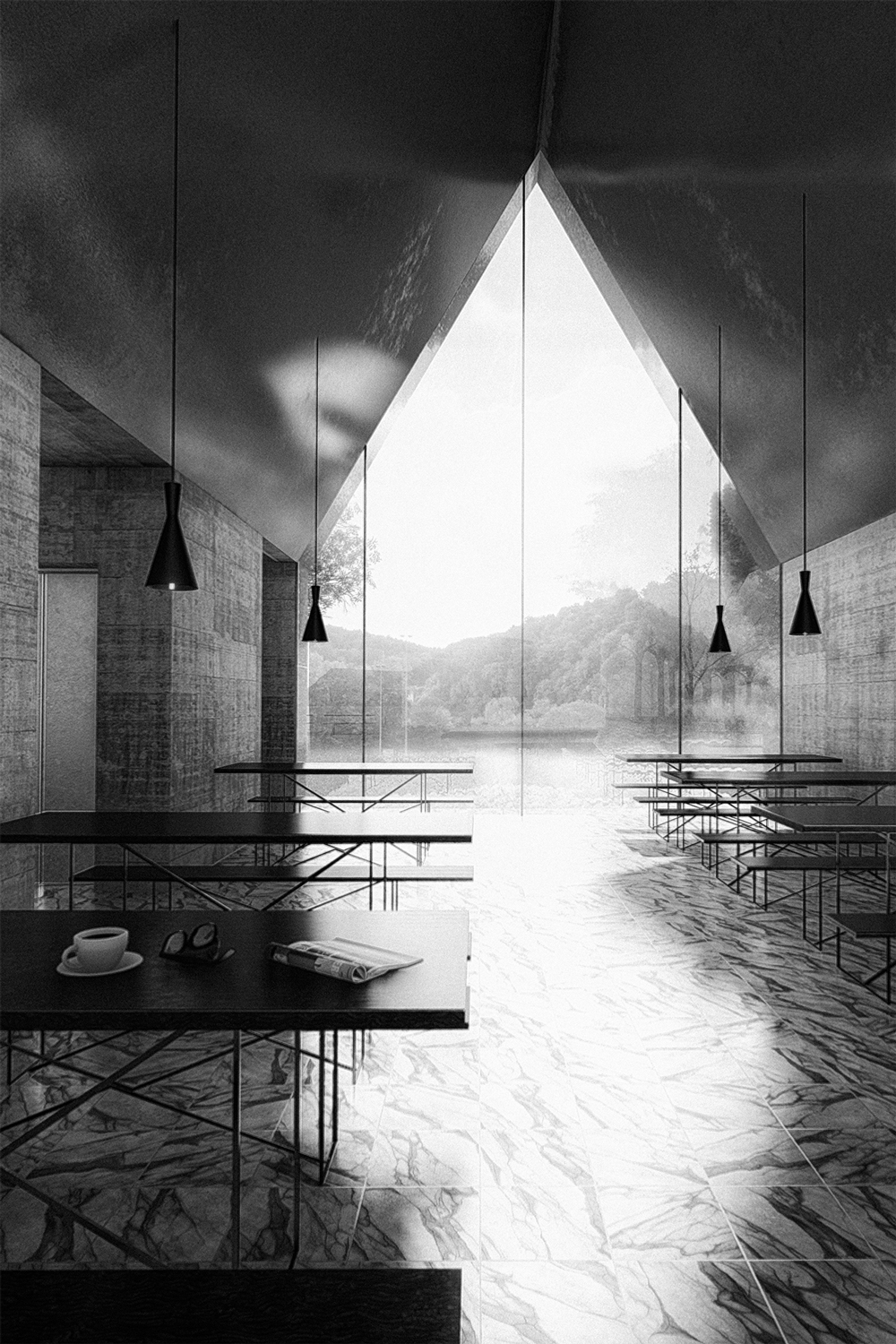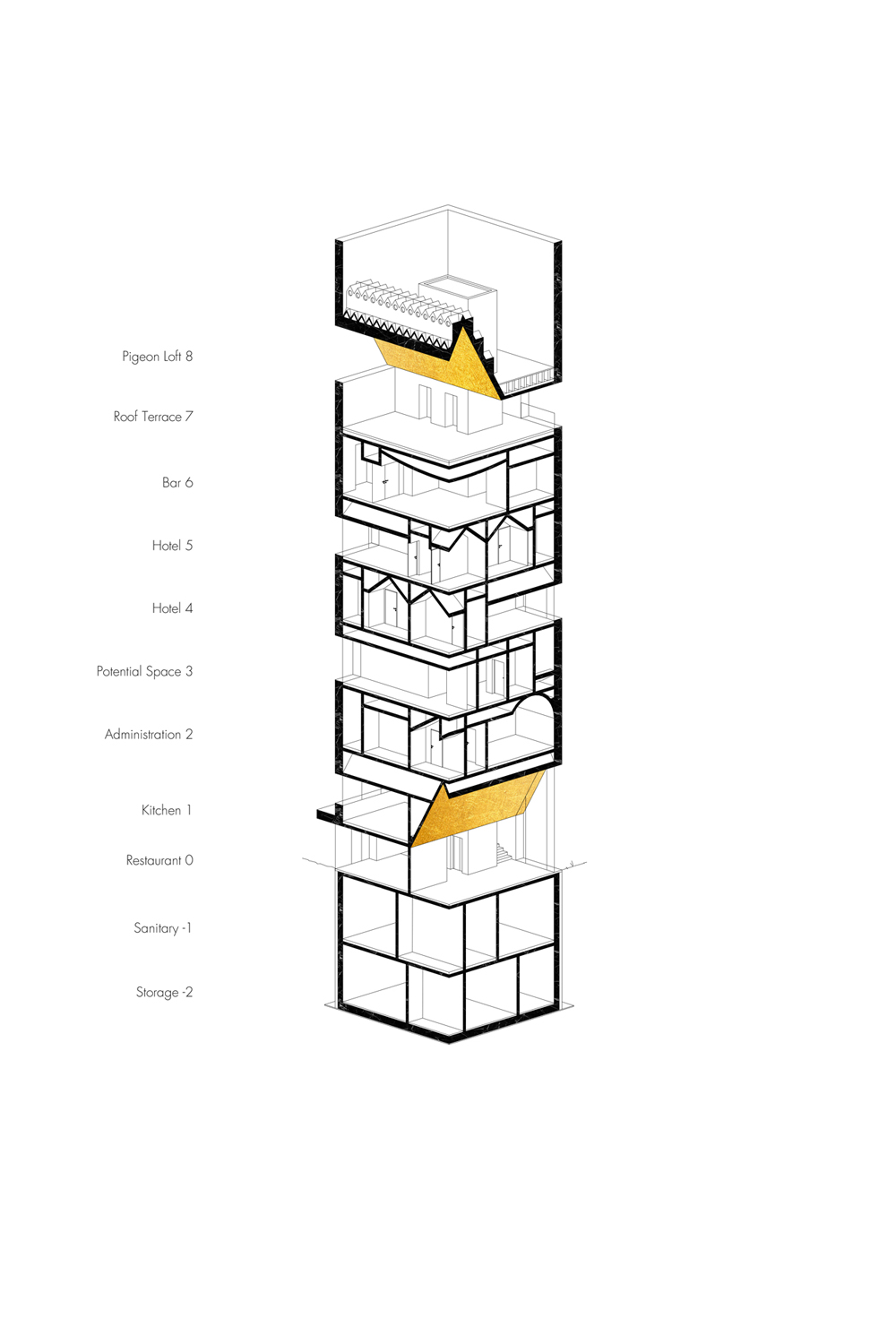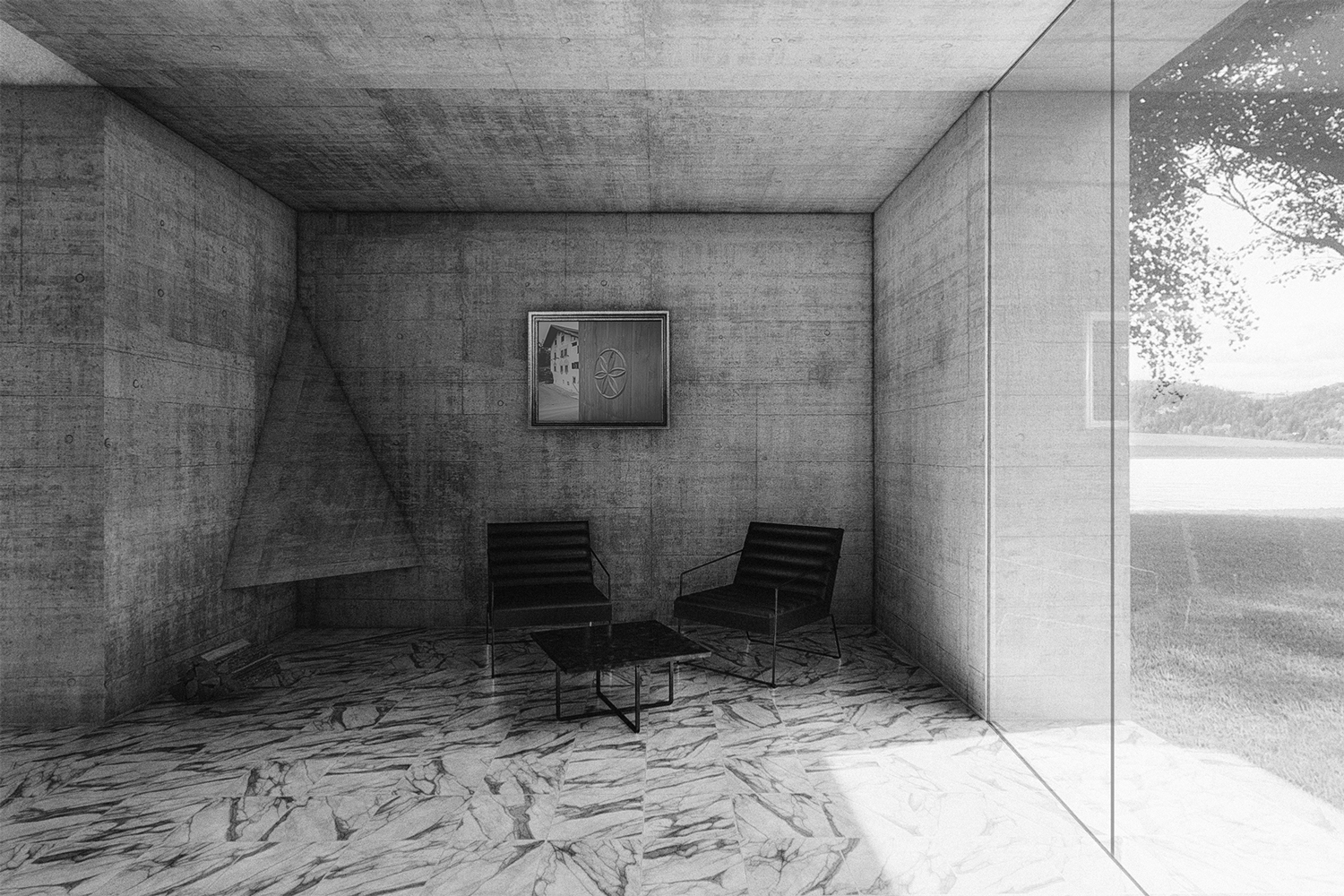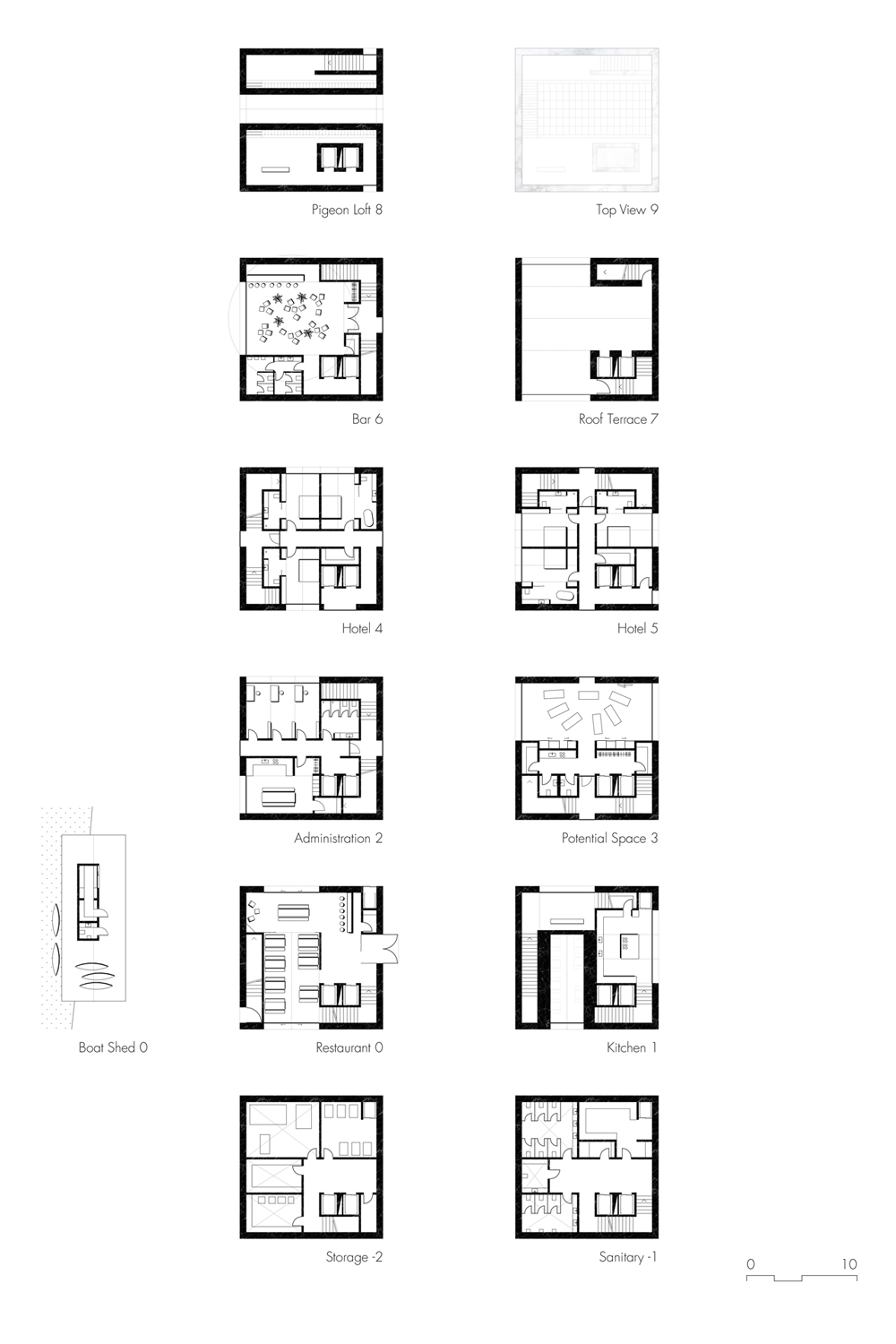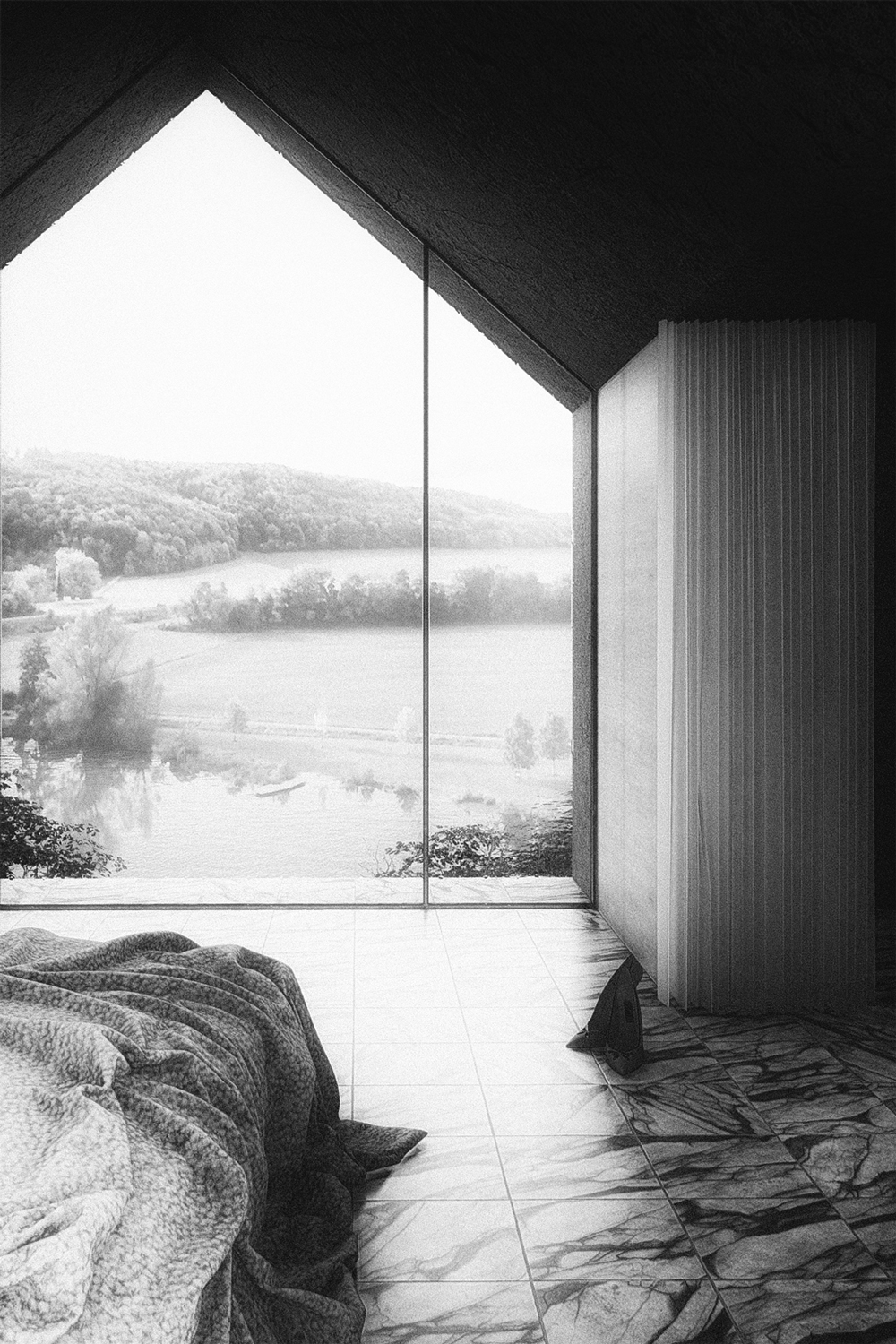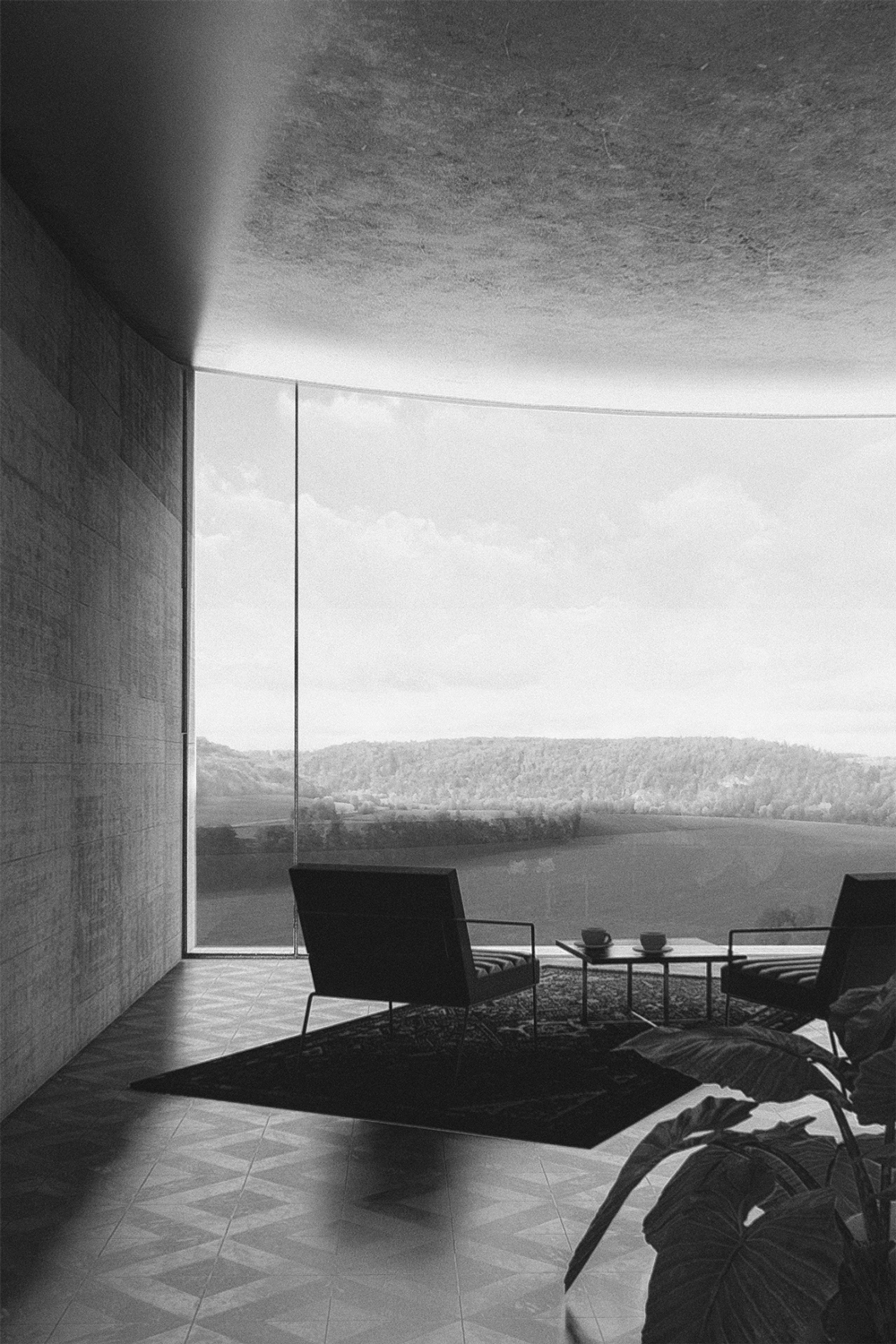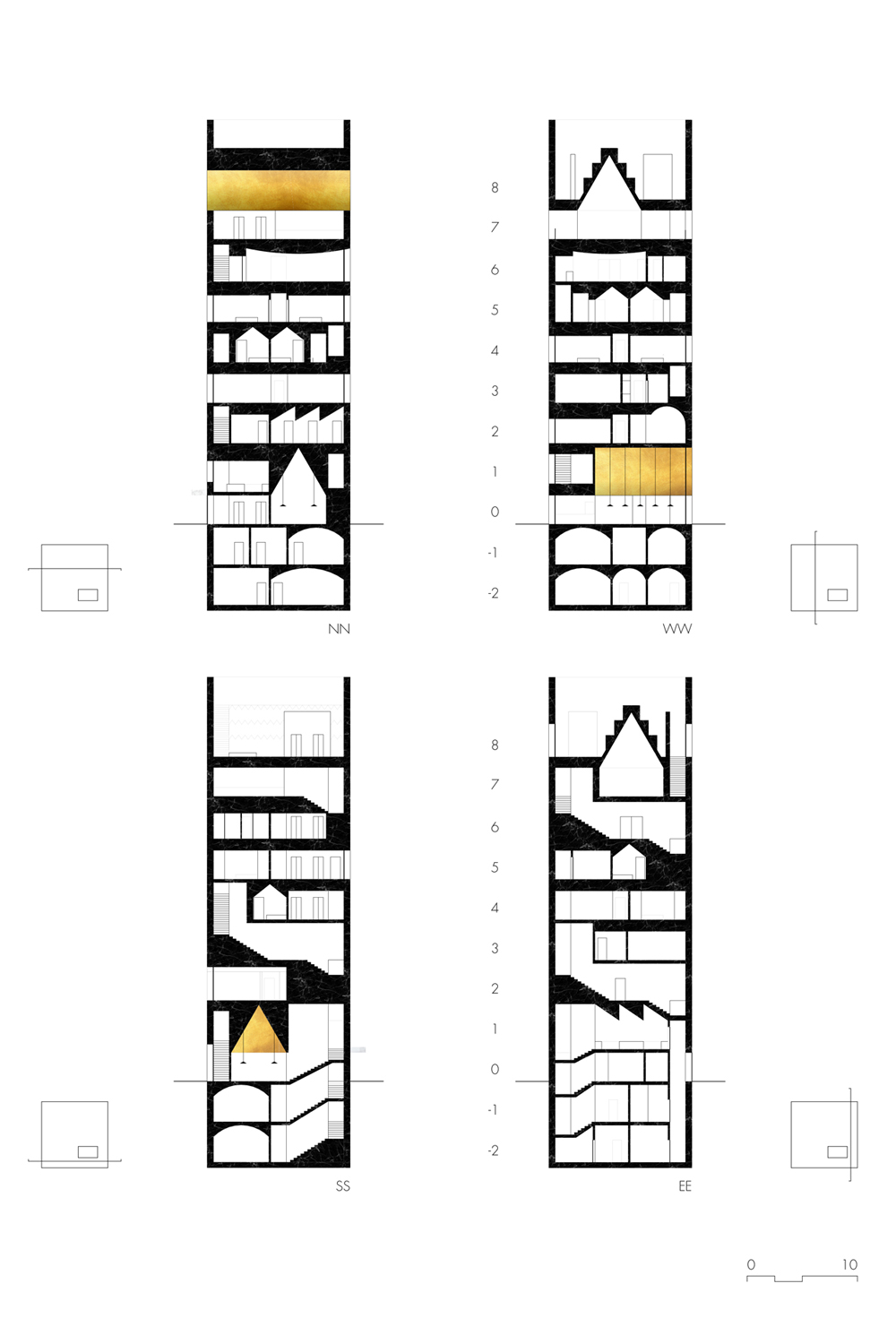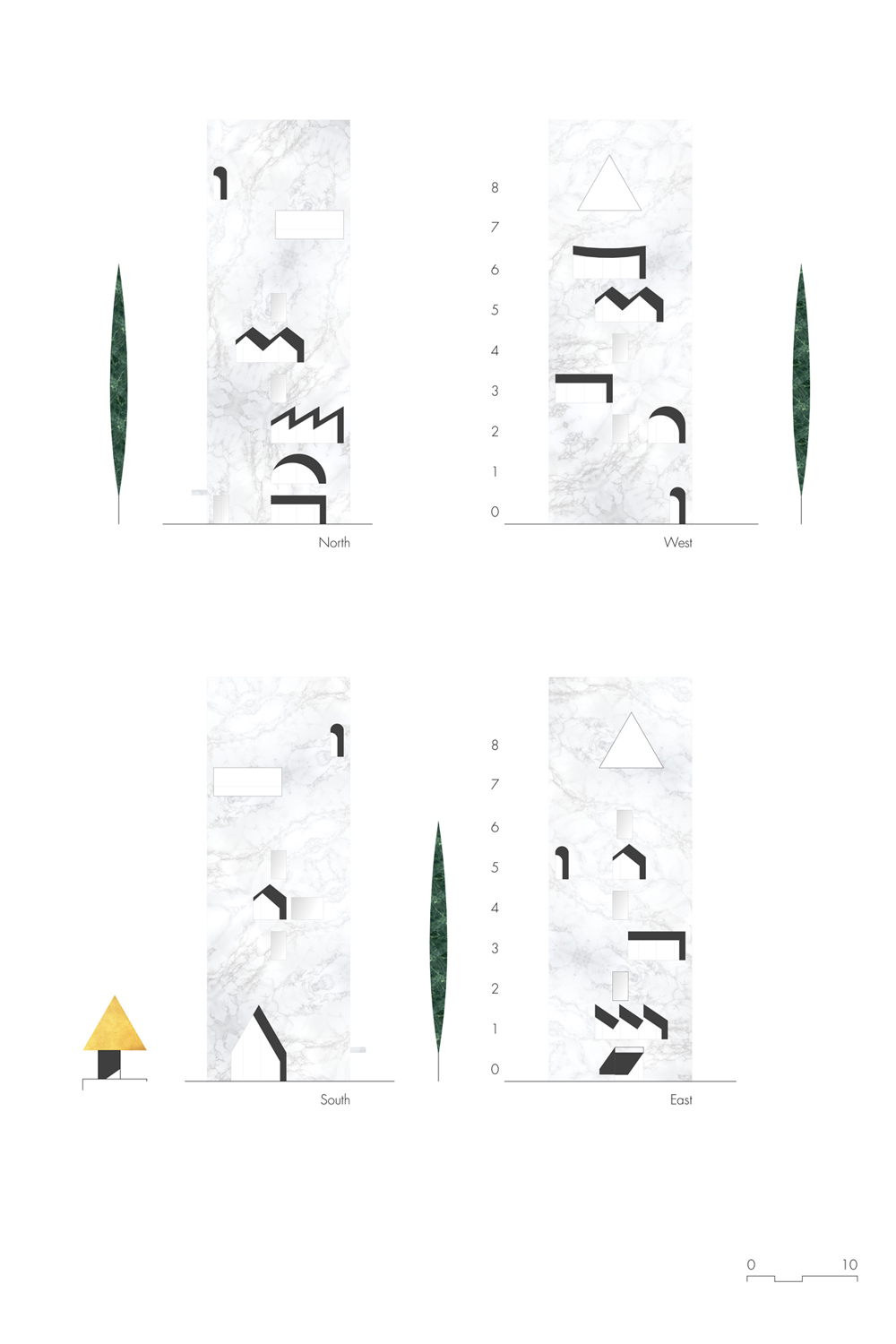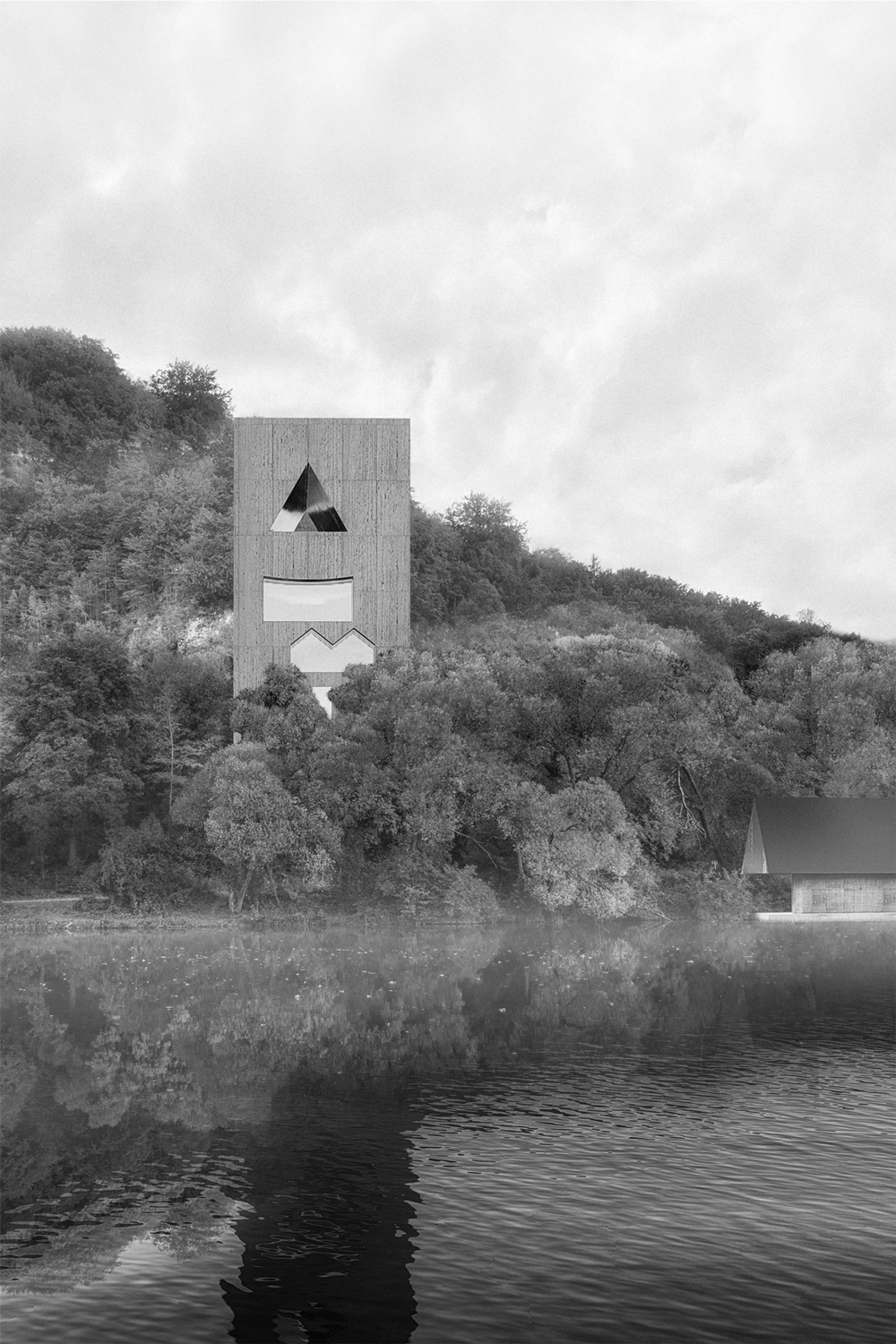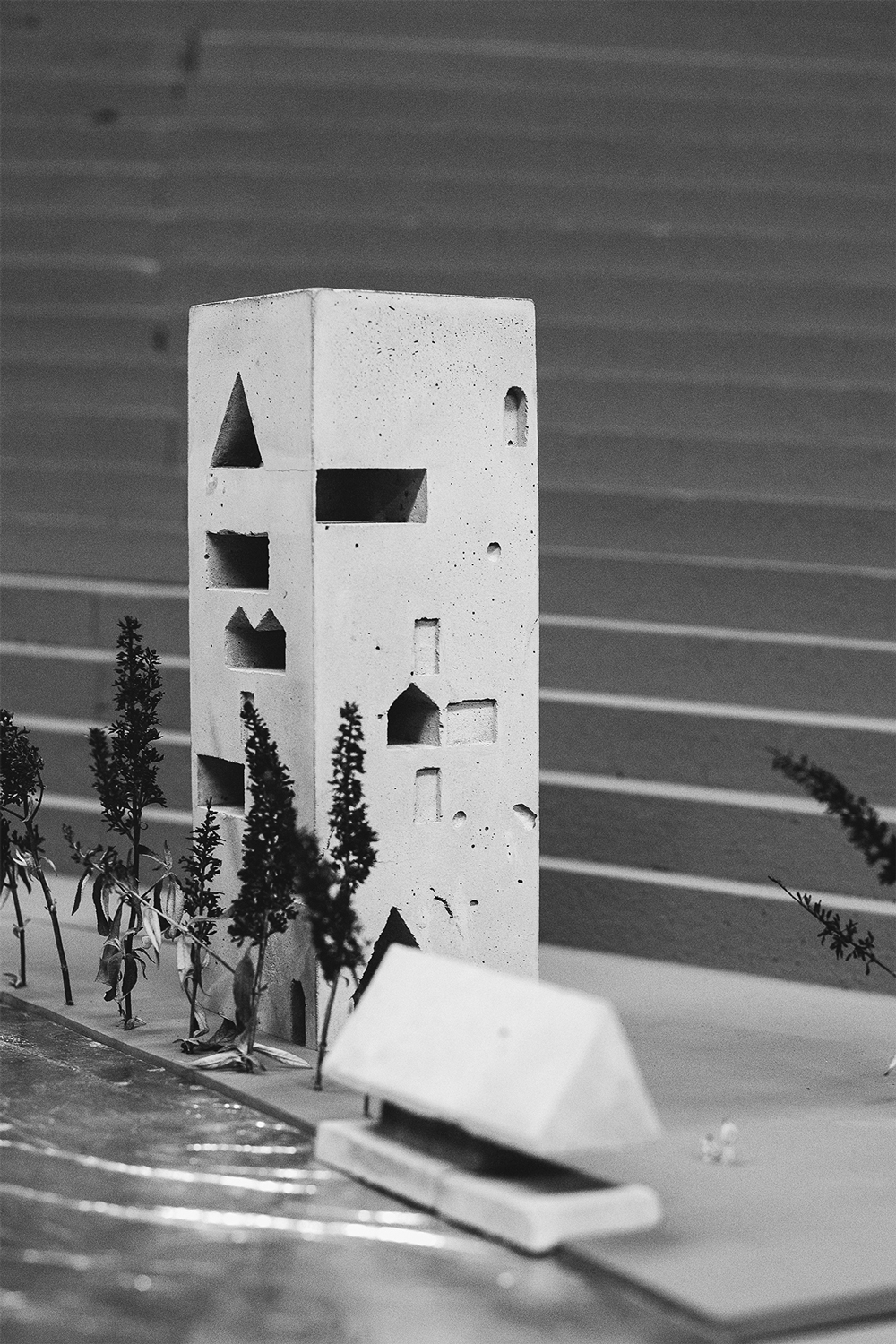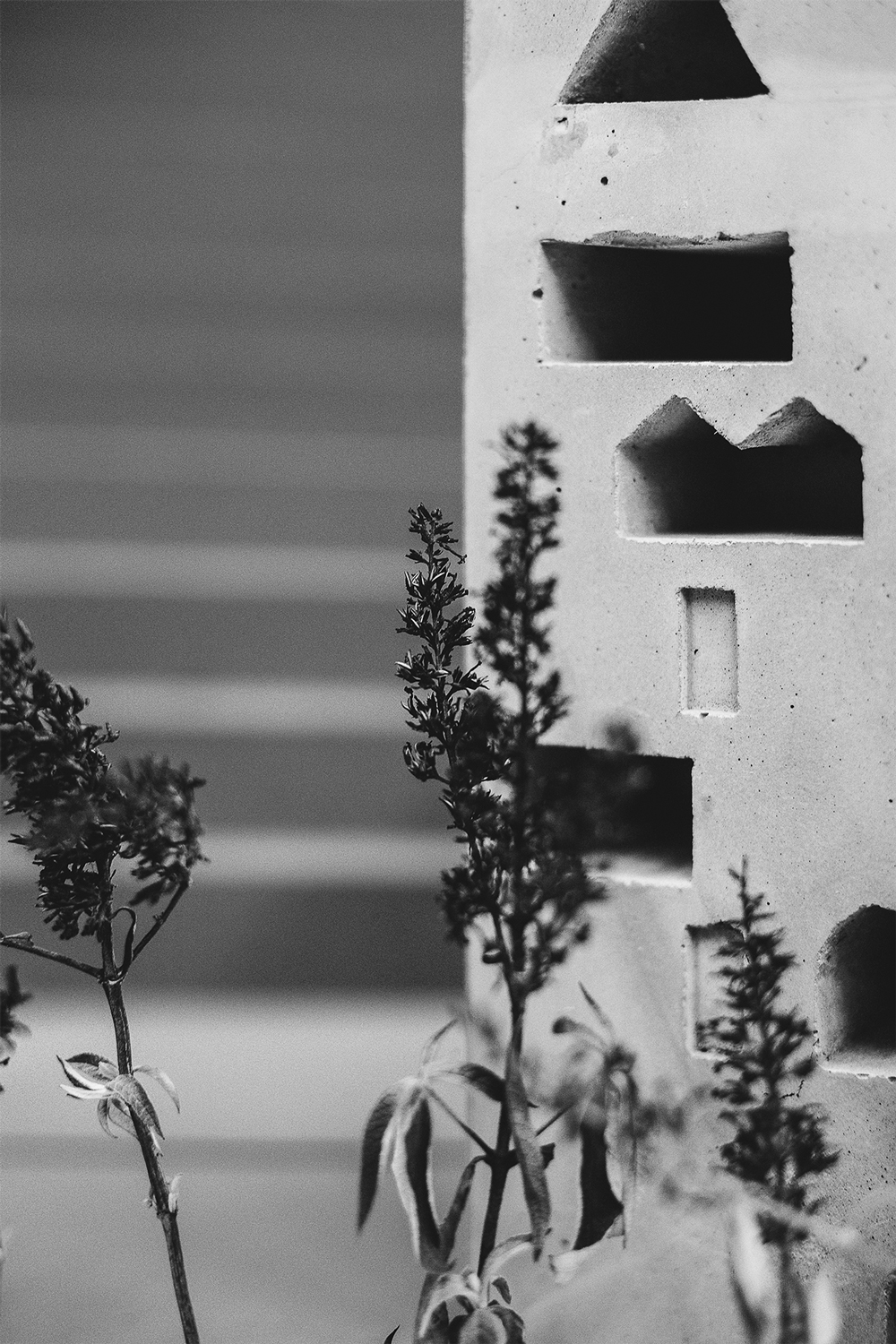2451-MPA-DE-2018
Client: OTH Regensburg
Status: Academic
Location: Regensburg, Germany
Coordinates: 49.034919, 11.992204
Climate: Continental, Temperate
Material: Concrete
Environment: Urban
Visualizer: Studio
Scale: 200 ㎡ Small
Types: Cultural, Mixed use
According to the special topology of the place directly at the river surrounded by mountains and from the own dynamics of the property the concept idea of a tower at the water was born. It was important to maintain the basic characteristics of an inn as a solitaire. Since the extensive room layout required a lot of space, but at the same time the surroundings along the Naab were to be retained as far as possible, only one tower was considered here to meet these requirements at the gates of the city of Regensburg.
The classical architectural language of an inn is abstracted in the design and taken up in various places in an idealized way. This is done with the help of basic volumes of archetypal vocabulary, which are arranged mentally on the base and thus form a space as a positive. Then the negative is filled with mass in order to turn this mental form skeleton into real space. The resulting building expresses the diverse requirements of an inn with a clear design language.
The tower is divided into four areas which offer sufficient space for the various functions required:
On the ground floor, the striking saddle roof holds the restaurant, which opens out onto the outside area. On the second and third floors there are rooms for administration – the social room, as well as a plugged potential space for events and flexible use. The hotel rooms are located on the upper floors.
As a grasped retreat, they take advantage of anonymity of height with maximum opening to the outside. The tower is closed off by a public roof terrace which together with the bar underneath forms a unit in the play with the contrast of perceptibly open and comfortably grasped.
Looking at the tower as a whole, it becomes clear that the roof terrace and the ground floor form a functional and spatial frame. These are connected by the necessary stairs and the inserted elevator. The surrounding staircase also makes it possible to experience the height of the building and to view the landscape from different perspectives.
Structurally, the use of thermo concrete as a building material is a consistent implementation of the concept. Thus, the monolithic massiveness of the solitaire is duly expressed.
